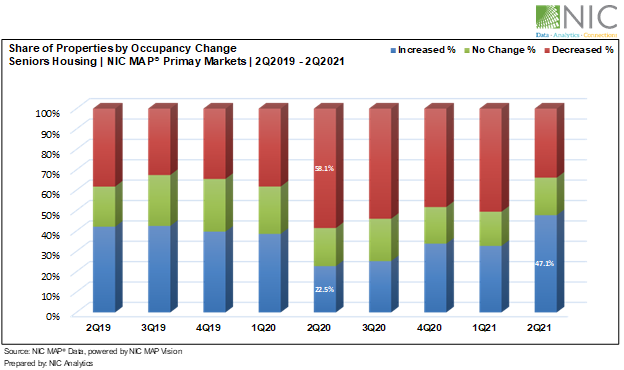“Despite the rise in circulation of the Delta variant of the COVID-19 virus, resident demand remains the driving force behind acceleration in the pace of move-ins. Between roughly 55% and 60% of organizations report that the pace of move-ins accelerated in the past 30-days, and similar proportions report a corresponding increase in occupancy. Other reasons for relatively strong pace of move-ins include residents moving through the continuum of care and the success of redoubled marketing efforts. NOI is likely being squeezed as all respondents in the Wave 31 survey indicated their organizations were experiencing staffing shortages, and all are currently paying staff overtime hours (100%), up from a low of 76% in the Wave 13 survey conducted in early-October 2020.”
–Lana Peck, Senior Principal, NIC
NIC’s Executive Survey of operators in seniors housing and skilled nursing is designed to deliver transparency into market fundamentals in the seniors housing and care space as market conditions continue to change. This Wave 31 survey includes responses collected July 12 to August 8, 2021, from owners and executives of 70 small, medium, and large seniors housing and skilled nursing operators from across the nation, representing hundreds of buildings and thousands of units across respondents’ portfolios of properties.
Detailed reports for each “wave” of the survey and a PDF of the report charts can be found on the NIC COVID-19 Resource Center webpage under Executive Survey Insights.
Wave 31 Summary of Insights and Findings
- Between roughly 55% and 60% of respondents note that the pace of move-ins accelerated in the past 30-days. The shares of organizations reporting acceleration in the pace of move-ins varied slightly from recent surveys for independent living, assisted living and memory care segments. For nursing care, the shift was a bit larger, with fewer organizations reporting acceleration in the pace of move-ins in Wave 31 compared with Waves 29 and 30. For nursing care, around half (54%) saw the pace of move-ins accelerating in the past 30-days, down from 70% in Wave 30 and possibly reflecting the uptick in COVID-19 cases in areas of the country with low vaccination rates.

- The chart below illustrates the full time series of Executive Survey Insights data collected since near the beginning of the pandemic in March 2020 to August 8, 2021, regarding the pace of move ins for the nursing care segment. Looking across 31 waves of survey responses one can see the improvement in the pace of move-ins (blue segments) after the vaccine was distributed in Wave 18 (late December) in sharp contrast to the significant deceleration in the pace of move-ins witnessed earlier in the pandemic (orange segments).
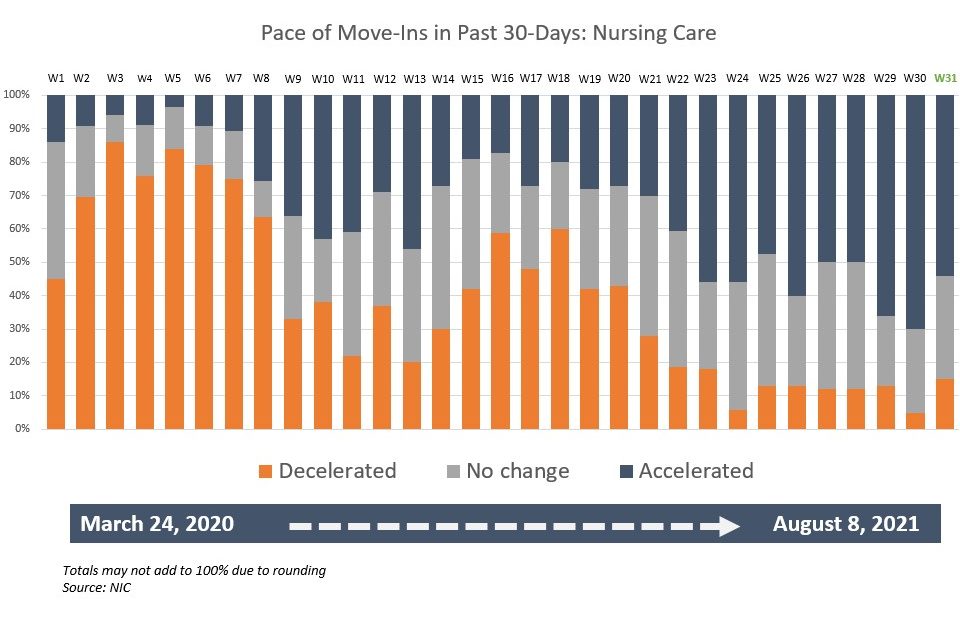
- Increased resident demand has been cited by nine out of ten respondents as a reason for acceleration in move-ins since the Wave 25 survey conducted in the latter half of March. In the Wave 31 survey, the percent of respondents citing hospital placement declined from 42% in Wave 30 to 21%. This decrease may reflect concerns about the rise in circulation of the Delta variant of the COVID-19 virus in many areas of the country. Other reasons for a shift in move-in patterns include residents moving through the continuum of care and the success of redoubled marketing efforts.
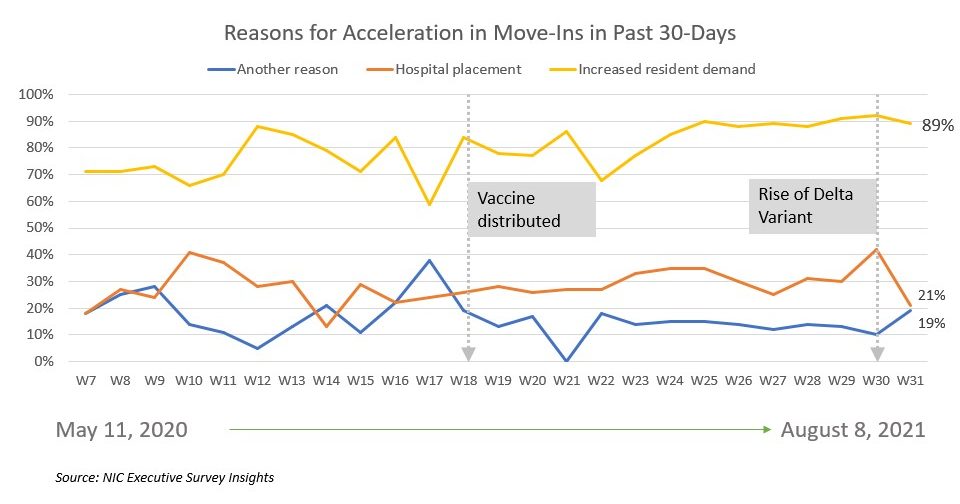
- Between roughly 50% and 70% of organizations report an increase in occupancy in Wave 31, with the memory care segment showing the most improvement since the prior survey (68%). The share of organizations that expect their occupancy to return to pre-pandemic levels has remained consistent since the question was first asked in the latter half of February. Since then, nearly two out of three respondents (61%) anticipate their organization’s occupancy will rebound to pre-pandemic levels sometime in 2022.
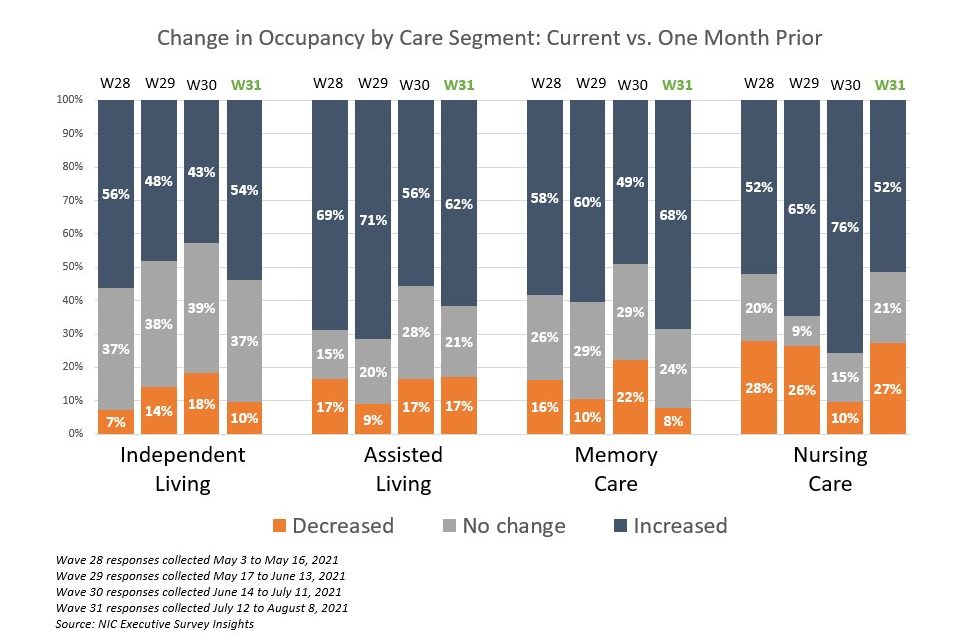
- During the Wave 31 survey data collection period (July 22 to August 8), several senior living companies—including some of the nation’s largest operators—have mandated the COVID-19 vaccine for employees. Additionally, major trade organizations AHCA/NCAL and LeadingAge and 56 healthcare groups recently urged vaccination requirements for all healthcare and long-term care employers. The chart below reflects the growing share of respondent organizations that will likely require the vaccine for their employees. (The Wave 32 survey asks respondents to indicate whether they have already made the vaccine mandatory.)
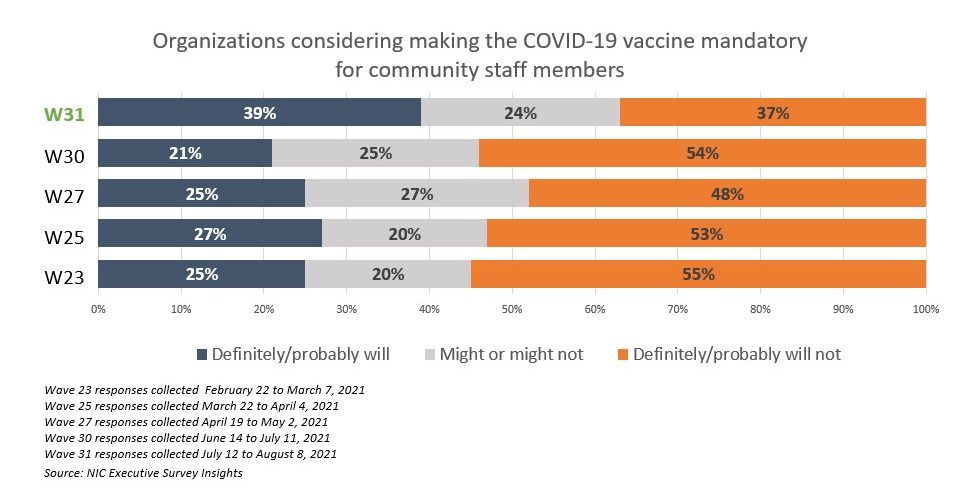
-
All respondents in the Wave 31 survey indicated their organizations were experiencing staffing shortages (100%). Among organizations with multiple properties, four out of five (80%) have staffing shortages in more than half of their properties—up from two-thirds (64%) in the Wave 29 survey conducted mid-May to mid-June.
-
A total of four out of five respondents indicated that attracting community and caregiving staff (51%) and staff turnover (30%) were the biggest challenges facing their organizations today. Roughly three-quarters (72%) indicated that increasing wages was the most effective tactic.
-
All respondents are currently paying staff overtime hours (100%) up from a low of 76% in the Wave 13 survey conducted in early-October 2020. Furthermore, four out of five organizations are currently tapping agency/temp staff (84%)—a time series high. One out of five (21%) are hiring staff from other industries similar to the Wave 3 survey conducted in mid-April 2020.
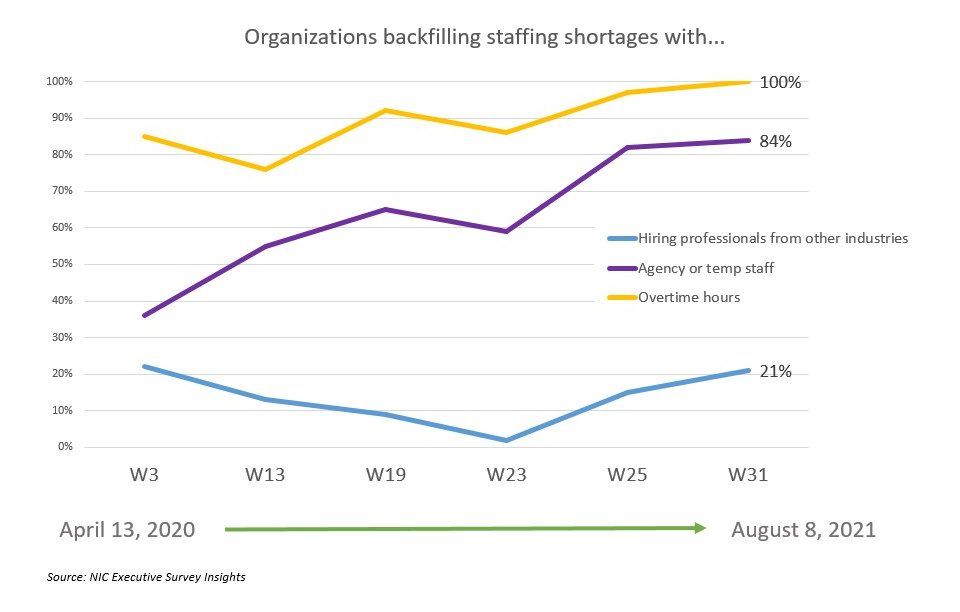
- With outlook that has remained generally unchanged since last summer, one-third of respondents (30%) in Wave 31 expect an increase in their development pipelines going forward. Among those who expect their development pipelines to increase, reasons such as current and future market demand, and continuation of expansion plans prior to the pandemic were cited most frequently.

Wave 31 Survey Demographics
Responses were collected between July 12 to August 8, 2021, from owners and executives of 70 seniors housing and skilled nursing operators from across the nation. Owner/operators with 1 to 10 properties comprise roughly two-thirds (63%) of the sample. Operators with 11 to 25 and 26 properties or more make up 19% of the sample, respectively.
- Approximately one-half of respondents are exclusively for-profit providers (54%); more than one-third operate not-for-profit (38%) and 8% operate both.
- Many respondents in the sample report operating combinations of property types. Across their entire portfolios of properties, 70% of the organizations operate seniors housing properties (IL, AL, MC), 34% operate nursing care properties, and 33% operate CCRCs (aka Life Plan Communities).
Owners and C-suite executives of seniors housing and care properties, please help us tell an accurate story about our industry’s performance.
The current survey is available and takes under ten minutes to complete. If you are an owner or C-suite executive of seniors housing and care and have not received an email invitation to take the survey, please contact Lana Peck at lpeck@nic.org to be added to the list of recipients.
NIC wishes to thank survey respondents for their valuable input and continuing support for this effort to bring clarity and create a comprehensive and honest narrative in the seniors housing and care space at a time when trends are continuing to change in our sector.
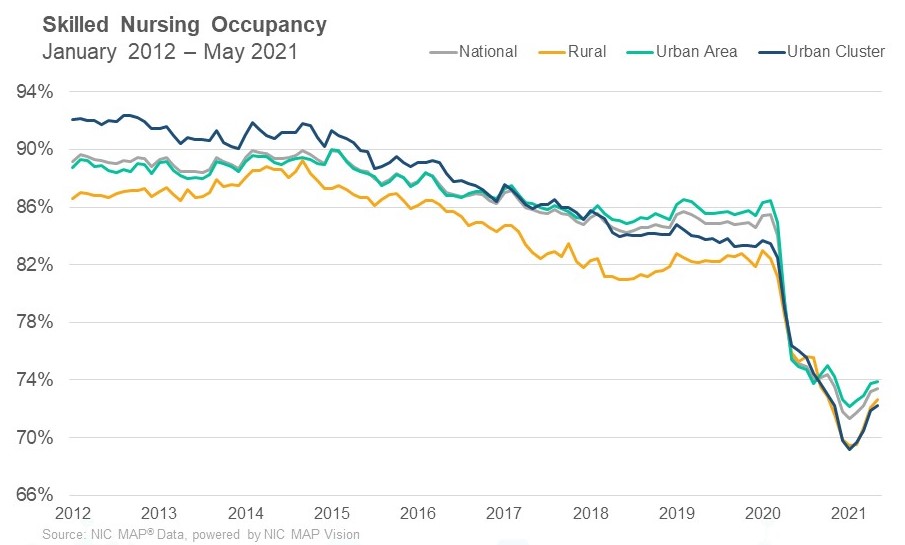
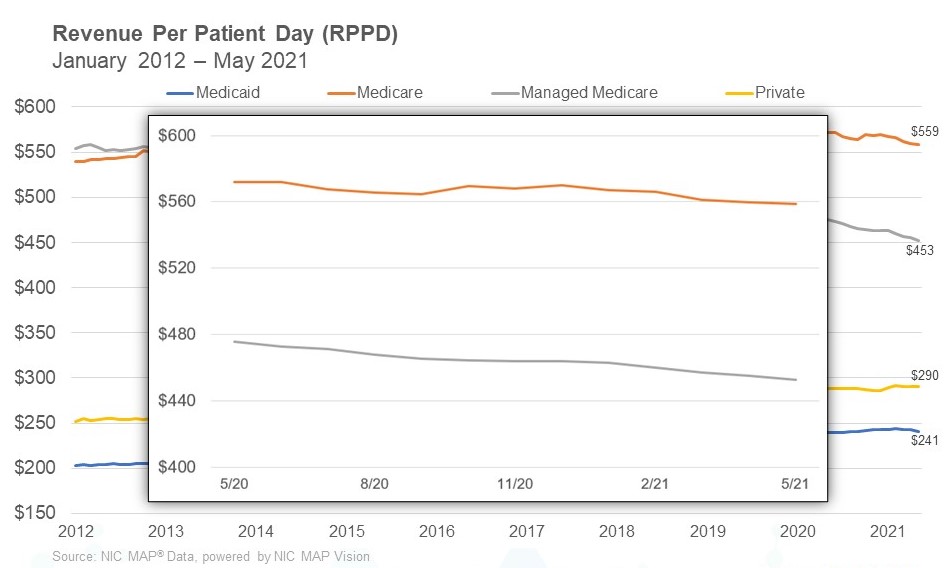
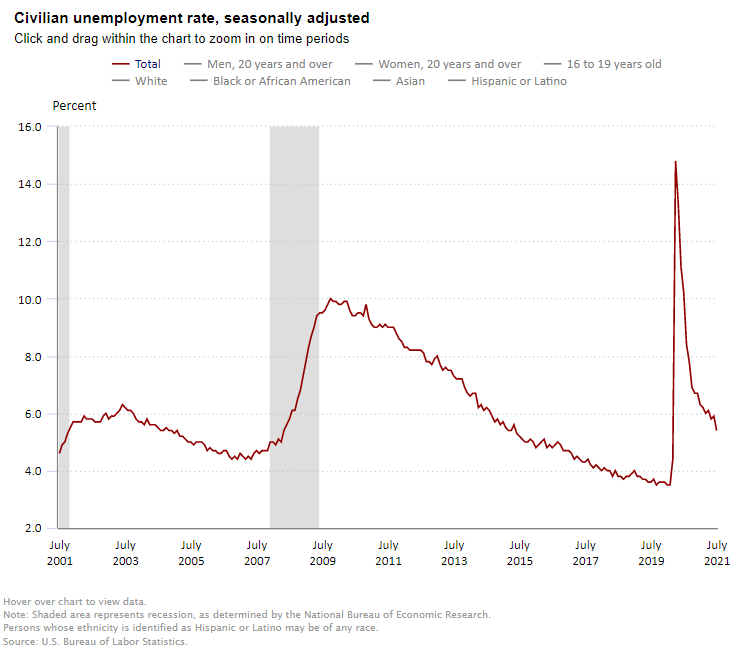
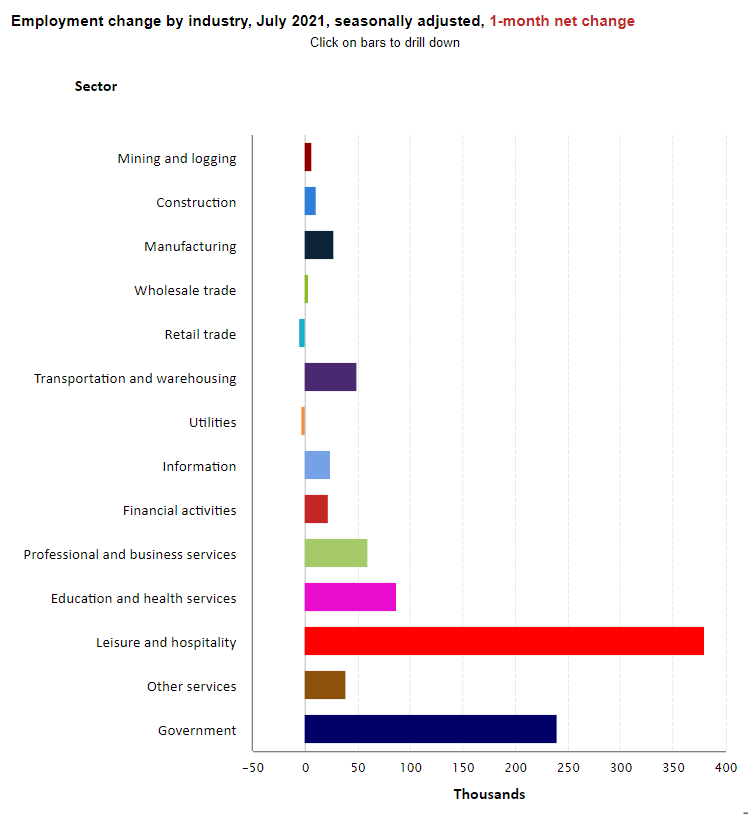
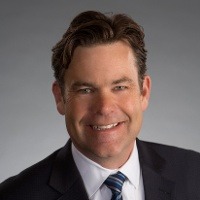 “The workforce is the key to the future,” said Fee Stubblefield, founder and CEO at The Springs Living. Based in McMinnville, Oregon, the company owns and operates 18 senior living communities in the Northwest. Two new developments are underway. “Solving the workforce challenge is the number one issue impacting the quality of senior housing,” he added.
“The workforce is the key to the future,” said Fee Stubblefield, founder and CEO at The Springs Living. Based in McMinnville, Oregon, the company owns and operates 18 senior living communities in the Northwest. Two new developments are underway. “Solving the workforce challenge is the number one issue impacting the quality of senior housing,” he added.